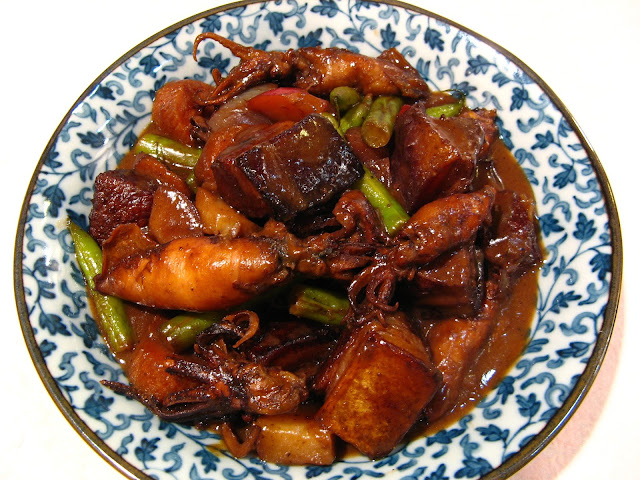I used brown beech mushrooms for the first time in a noodle
dish. These mushrooms are also known as Shimeji (Hypsizygus tessellatus) mushrooms and are
available at your local Asian market. The mushrooms are firm with a nutty
taste. Any mushroom can be substituted if beech mushrooms are not available.
This lamb noodle dish actually has a lot of texture to it, through the use of
cabbage, bamboo shoots, and onions, and is similar to the Cabbage
Lamb Dough Sliced Noodles (青椰菜羊肉刀削麵,
Ceng1 Je4 Coi3 Joeng4 Juk6
Dou1 Soek3 Min6) recipe, except for the
addition of the black bean chili sauce.
Enjoy!






